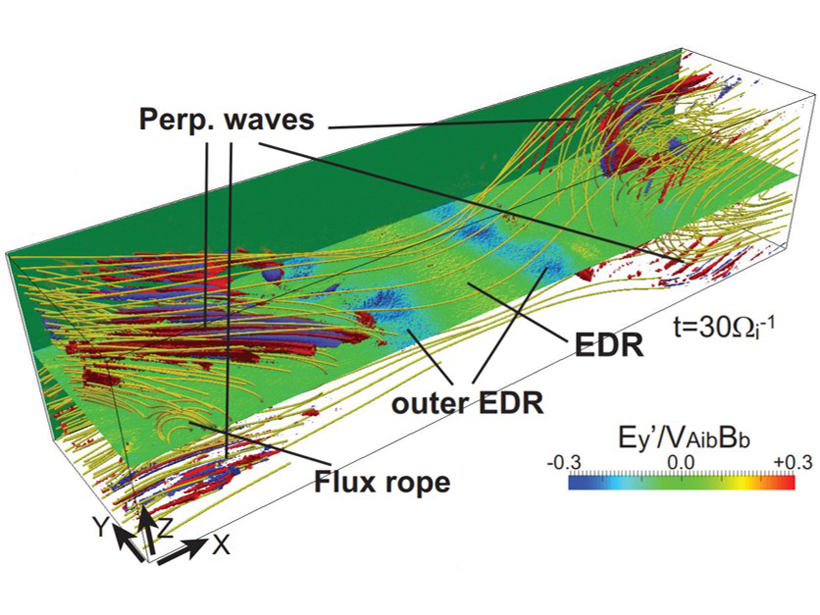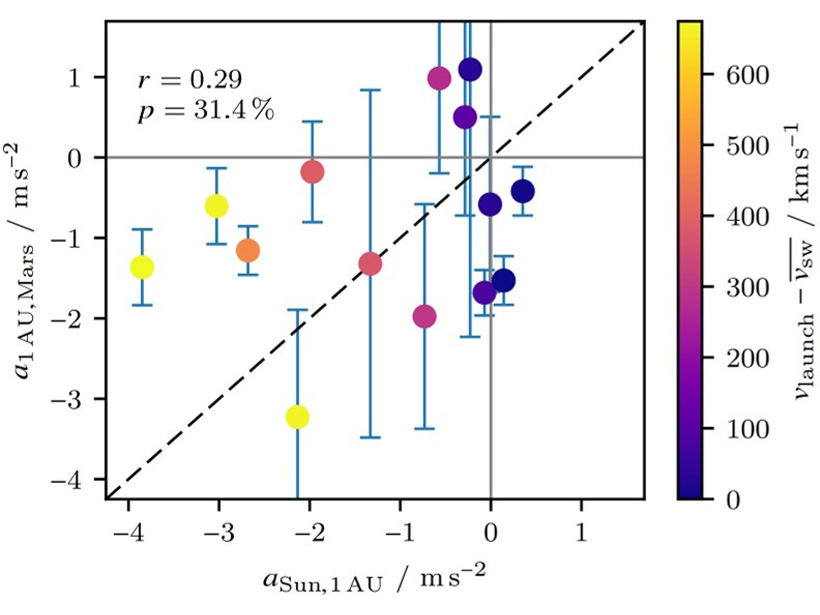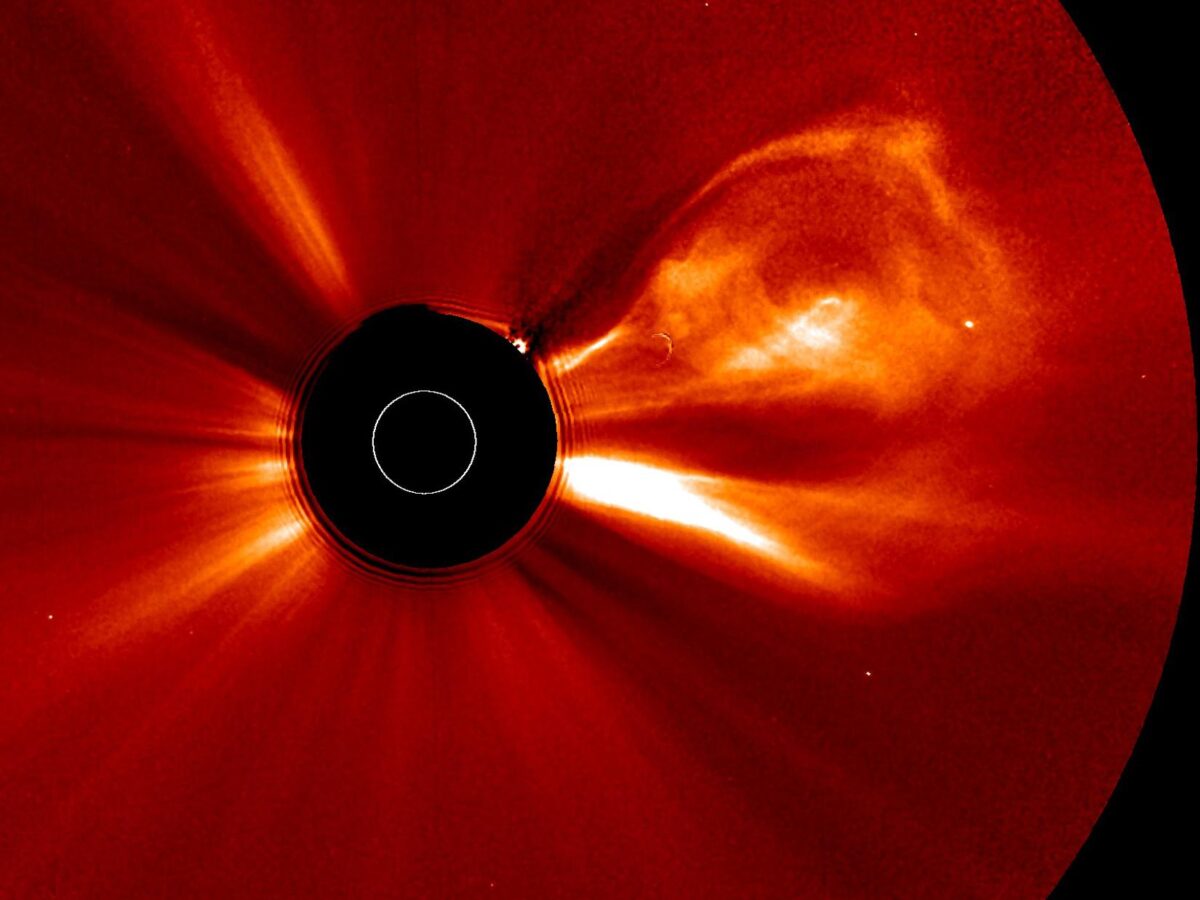A new measurement of plasma density distribution in Mercury’s magnetosphere obtained from observations of field line resonance events provides necessary constraint for many planetary science issues.
Y. Wang
Posted inEditors' Highlights
Measuring the Magnetic Reconnection Rate in the Magnetotail
Both simulations and observations are used to measure the magnetic reconnection rate in the Earth’s magnetotail, suggesting that the rate is correlated with the intensity of a magnetic substorm.
Posted inEditors' Highlights
Cassini Reveals a Missing Link on Saturn’s Rotating Aurora
The bright aurorae dancing in the sky are produced by charged particles traveling along the magnetic field lines from tens of planetary radii. By why do aurorae rotate at Saturn but not at Earth?
Posted inEditors' Highlights
Fast CMEs Continue to Decelerate in the Outer Heliosphere
Most fast coronal mass ejections will be decelerated into ambient solar wind quickly in the inner heliosphere, but some of them continue the deceleration with an even larger amplitude beyond 1 AU.
Posted inEditors' Vox
Toward an Understanding of Earth-Affecting Solar Eruptions
Coronal mass ejection forecasting improves with technological developments and increasing availability of data.





